My most popular prime rib recipes feature various cooking methods, including smoking, grilling, air frying, roasting, and more! I'm always testing out new tips and tricks for the best prime rib roast because it's a holiday tradition in my household. I can't narrow it down to a favorite because each of these recipes resulted in a tender, juicy, and flavorful roast beef worthy of any special occasion!
Complete your prime rib dinner with a few of my favorite side dishes for prime rib roasts. Refer to my guides on how long you can freeze and how long you can refrigerate prime rib for the best results!
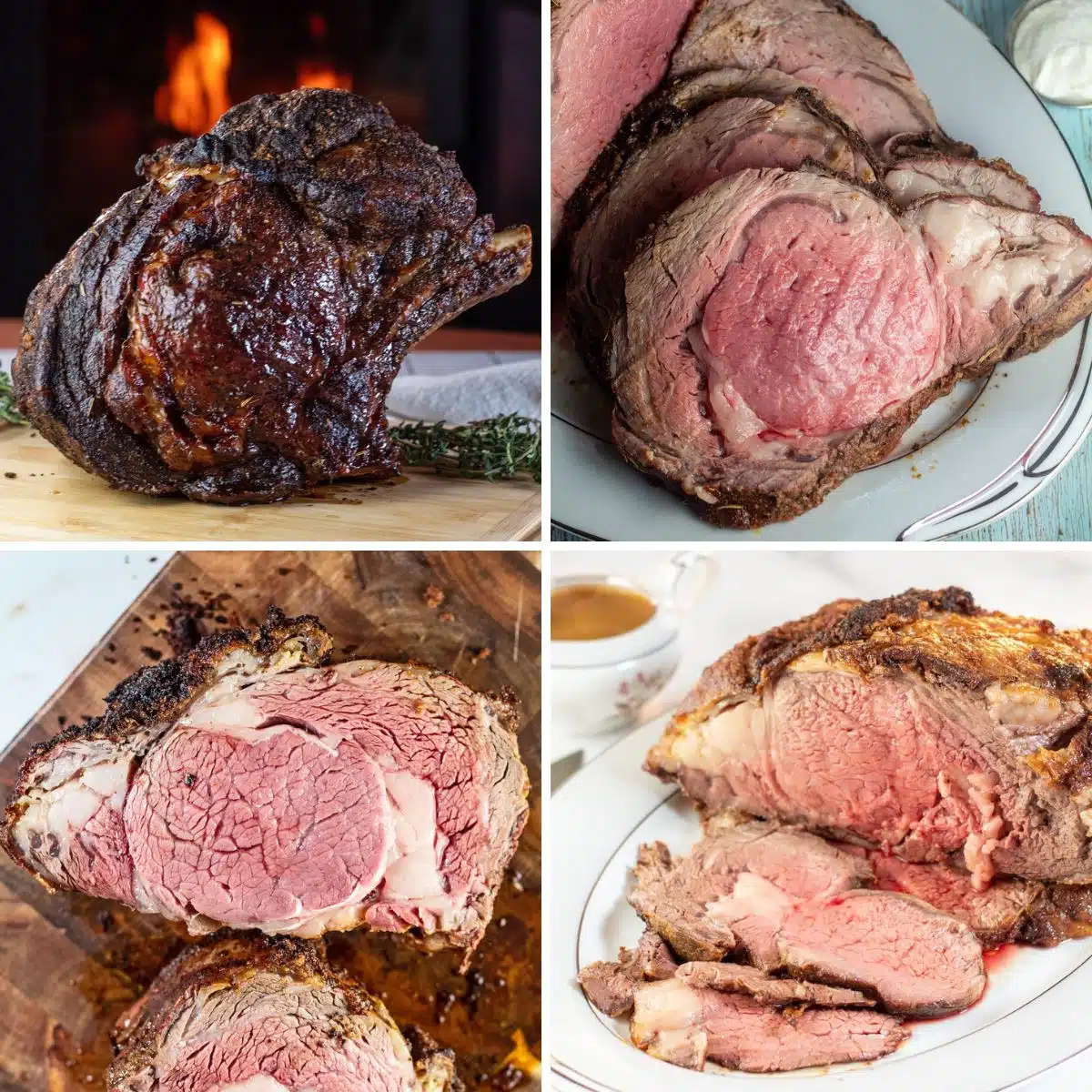
Jump to:
- Best Ways To Cook A Prime Rib Roast (Boneless & Bone-In)
- 1. Air Fryer Prime Rib
- 2. Christmas Roast
- 3. Grilled Prime Rib
- 4. Standing Rib Roast
- 5. Oven Roasted Prime Rib with Dry Rib Rub
- 6. Smoked Prime Rib
- 7. Smoked Bison Prime Rib
- 8. Boneless Prime Rib
- 9. Roasted Garlic Crust Roast
- 10. No Peek Prime Rib
- Best Condiments For Prime Rib
- What To Make With Leftovers
- 💭 Tips For Cooking The Best Prime Rib Roast
- 📖 Recipe Card
- 10 Best Prime Rib Recipes (How To Make The Perfect Prime Rib Roast!)
- 💬 Comments & Reviews
Best Ways To Cook A Prime Rib Roast (Boneless & Bone-In)
A succulent prime rib roast makes a show-stopping main course for Easter, Thanksgiving, or Christmas dinner. Because it's a premium cut of meat and often a bit of a splurge, it's usually reserved for special occasions.
That means a dry, undercooked, or overcooked prime rib roast would be even more devastating than your average Tuesday night dinner. Luckily, I've tested these prime rib recipes so many times that they have clear and concise steps that anyone can follow!
1. Air Fryer Prime Rib
Air fryer prime rib is a hassle-free way to achieve a perfectly cooked, juicy roast. Season the prime rib with your favorite rub or steak seasoning, place it in the air fryer basket, and close.
Sit back and let the circulating hot air create a delicious, crispy crust outside your roast while maintaining a tender inside. The result is a flavorful prime rib that's both time-efficient and impressive!
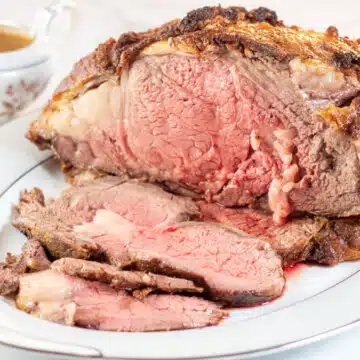
2. Christmas Roast
Beneath the crispy seasoned crust, this Christmas prime rib roast is slathered in horseradish for an extra burst of flavor. Then, it is roasted low and slow in the oven to tender juicy perfection!
The heavenly smell alone will have your family scrambling to the Christmas dinner table!

3. Grilled Prime Rib
The tender and succulent goodness of a prime rib roast plus the smokey flame-kissed flavor from coming hot off the grill? Yes, please!
If we're craving prime rib in the summer months, this and smoked prime rib are my top two contenders.
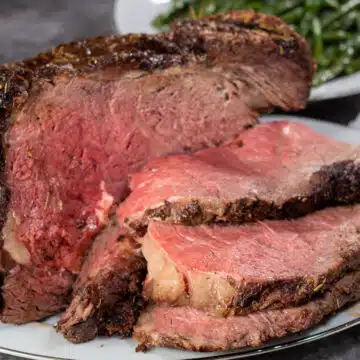
4. Standing Rib Roast
A standing rib roast is like a picture-perfect postcard version of Christmas dinner. It's called 'standing' because it is typically roasted upright, with the ribs serving as a natural roasting rack.
This sought-after cut is well-marbled, providing succulence and a rich taste, making it a favorite for special occasions and holiday feasts!

5. Oven Roasted Prime Rib with Dry Rib Rub
This is my favorite method for cooking a perfect prime rib in the oven using a simple dry rub you can make with what's in your spice cabinet. You will need a roasting pan or roasting rack, but I promise it's worth the small investment!
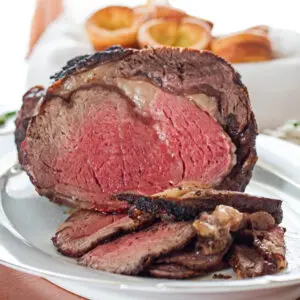
6. Smoked Prime Rib
Achieve a melt-in-your-mouth beef roast with this foolproof recipe for succulent, slow-smoked prime rib. The tender meat absorbs the wonderful smokey flavor for a truly unique roast!
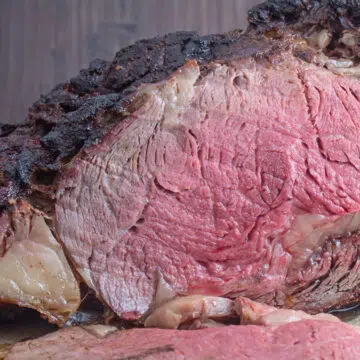
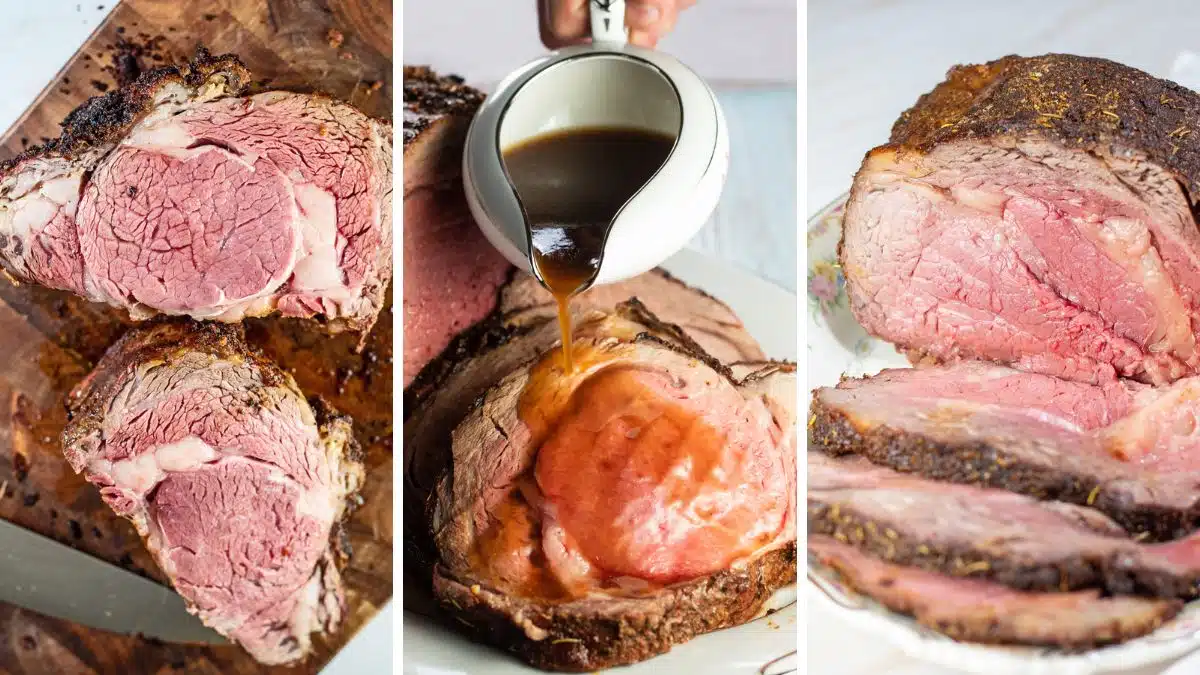
7. Smoked Bison Prime Rib
If you want something extra special, I highly recommend a bison prime rib. There's something about the natural, earthy, meaty taste of bison paired with a rustic, smokey flavor that makes this roast feel even more decadent.
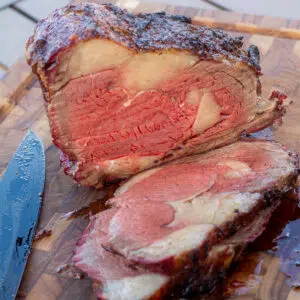
8. Boneless Prime Rib
A bone-in prime rib will take longer to cook than a boneless prime rib, so I follow these guidelines if boneless is what I have on hand. This roast slices like butter and has so much rich, beefy flavor that it's almost a crime not to save the drippings and make an au jus!
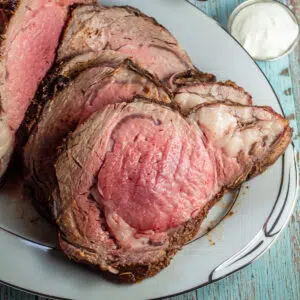
9. Roasted Garlic Crust Roast
This is my first prime rib recipe on the site and what started the tradition of serving prime rib for extra special occasions. Coming from a family of garlic lovers, the roasted garlic crust on this roast makes it a timeless favorite!
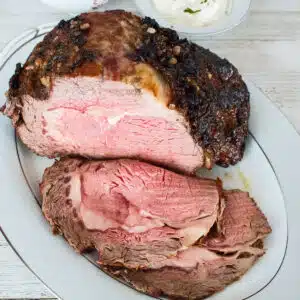
10. No Peek Prime Rib
This popular oven-off method for cooking prime rib sears the roast in the oven at 500°F (260°C) for a crispy brown sear on the outside. Then, you just turn off the oven and don't touch it for 2 whole hours!
If it's not cooked to perfection after 2 hours, you can quickly turn on the oven to finish it up. It's practically hands-off, and the results are delicious!
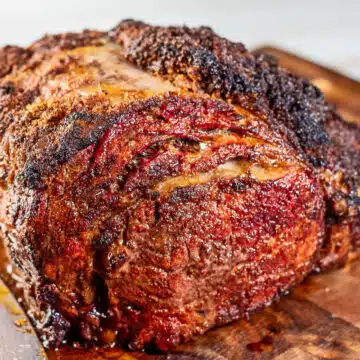
>>>See All Of My Tasty Recipes Here!<<<
Best Condiments For Prime Rib
As if a gorgeous prime rib roast wasn't enough, you can elevate it even further with the right condiments. Zesty horseradish sauce is a classic (and my personal favorite).
However, you could also opt for a savory au jus if you aren't a fan of horseradish. Just save the beef drippings from your roast while it rests, and you can quickly whip up an au jus before dinner!
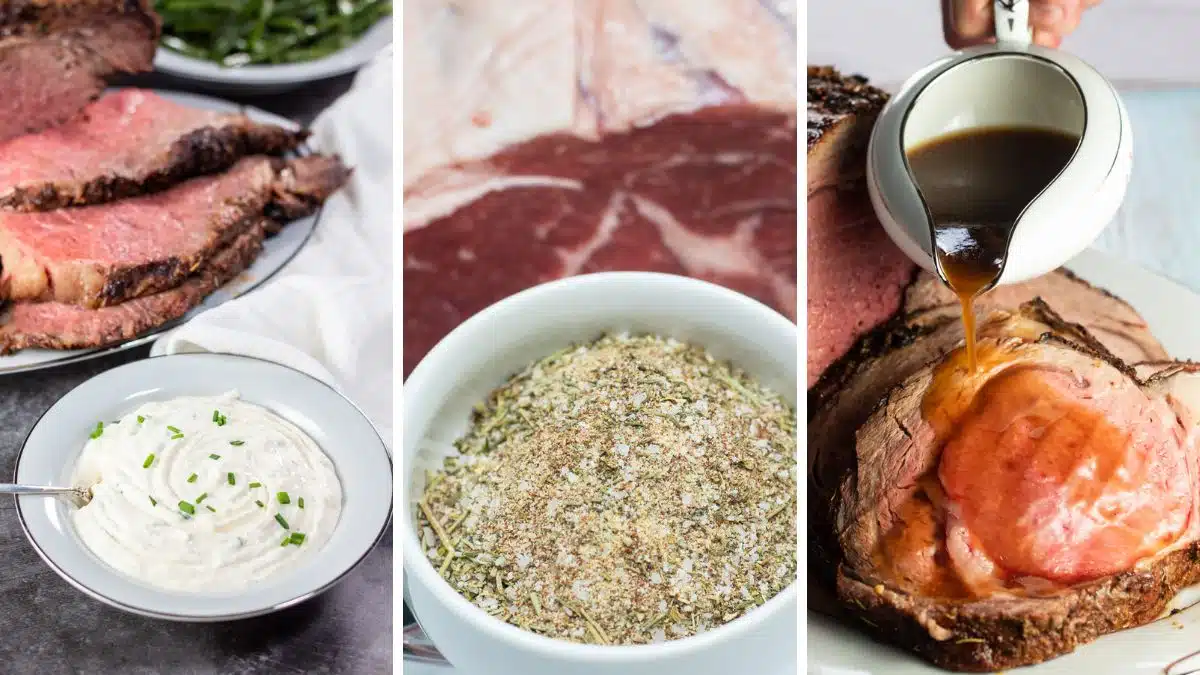
If you prefer a more traditional gravy that is thicker than au jus, you can save your roast drippings to make prime rib gravy with cornstarch!
What To Make With Leftovers
As delicious as it is, beef roast is incredibly filling, and I often end up with leftovers. You can reheat and eat those precious slices of leftover prime rib or use them to make something new and equally delicious!
For a quick and easy meal, pile thinly sliced prime rib high on two pieces of bread for a gourmet sandwich. Or, make another unforgettable family dinner and serve up prime rib ragu!
If I know we have more leftover meat on my hands than we can eat, I freeze it. Then, I thaw out my leftover roast for the most hearty and comforting chili when the winter weather gets dreadful!
I have a vast selection of leftover prime rib recipes on the site that are worth checking out if you want to plan ahead! Follow my guide to storing and reheating prime rib here to get the most out of your leftovers!
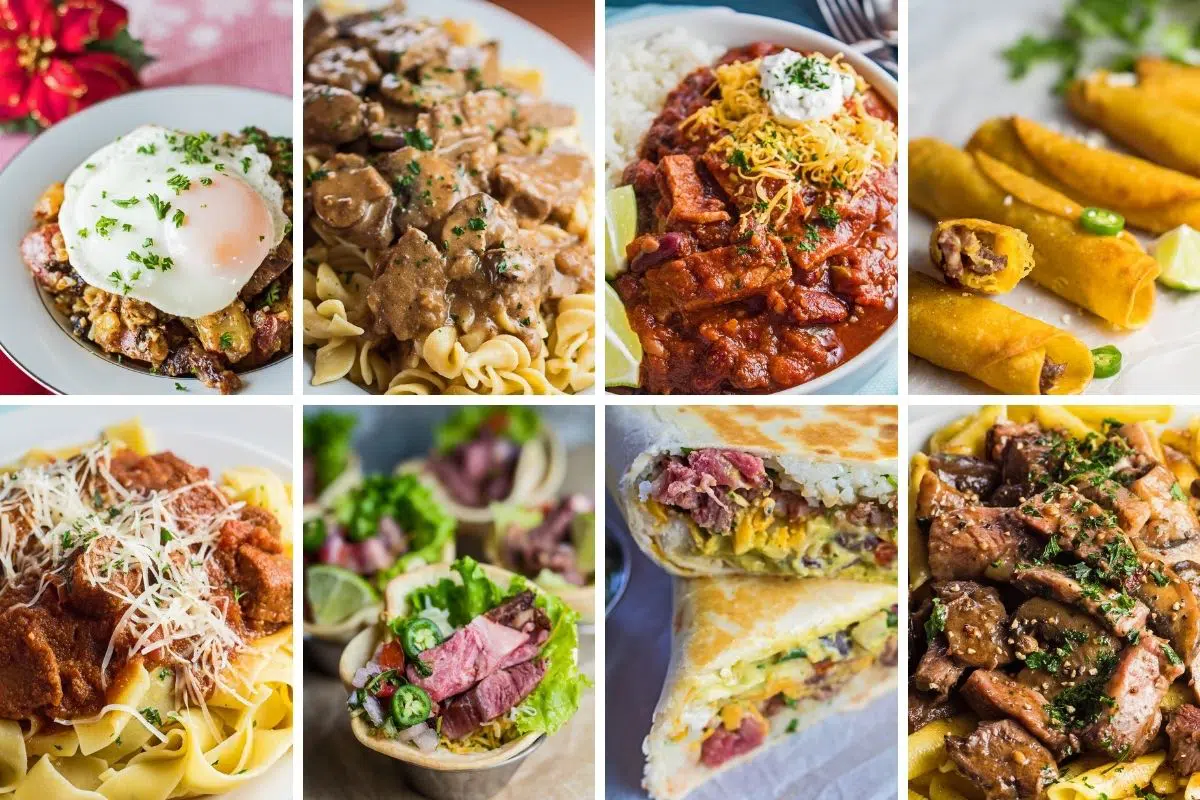
💭 Tips For Cooking The Best Prime Rib Roast
With many years of practice and tasty trials under my belt, cooking a perfect prime rib is one of the things I am most confident about. Here are a few of my most essential tips that are true no matter what cooking method you choose!
- Select a high-quality roast: When you're shopping, look for a well-marbled cut of prime rib. The marbling (aka the streaks of white fat) adds to the juiciness and richness of the meat. Selection is such an important part of the process that I have an entire page dedicated to how to pick the perfect roast!
- Bring the meat to room temp: I always take my prime rib roast out of the refrigerator at least 2 hours before cooking to let it come to room temperature. This drastically helps it to cook evenly.
- Season generously: Season the roast liberally with salt, pepper, herbs, and spices, or use my prime rib dry rub. Make sure to season the entire surface and both ends.
- Use a meat thermometer: I recommend investing in a good-quality meat thermometer. I use the thermometer every time to monitor my roast's internal temperature accurately. Follow my guidelines for prime rib's internal temperature and levels of doneness.
- Let it rest: You have to let your roast rest for at least 15-20 minutes before carving to let the juices redistribute throughout the meat for a juicier roast.
Do you love a recipe you tried? Please leave a 5-star 🌟rating in the recipe card below and/or a review in the comments section further down the page.
Stay in touch with me through social media @ Pinterest, Facebook, Instagram, or Twitter! Subscribe to the newsletter today (no spam, I promise)! Don't forget to tag me when you try one of my recipes!
📖 Recipe Card
10 Best Prime Rib Recipes (How To Make The Perfect Prime Rib Roast!)
Ingredients
Boneless Prime Rib Roast
- 5 lb prime rib (boneless roast or standing rib roast)
- 2 tablespoon horseradish (for coating the roast)
Prime Rib Rub
- 1 ½ tablespoon kosher salt
- 1 tablespoon coarse ground pepper (freshly ground is best)
- ½ tablespoon garlic powder
- 1 teaspoon smoked paprika (or regular paprika)
- 1 teaspoon dried rosemary
- 1 teaspoon ground sage
- 1 teaspoon dried thyme
- ½ teaspoon dried oregano
- ½ teaspoon onion powder
(Note: 2x or 3x only changes the ingredient list)
Instructions
Preparation
- First, rinse your prime rib roast under cool running water, then pat it dry using paper towels. Slice off any excess fat or silver skin if desired. If possible, set your roast out 1-2 hours before cooking to come to room temperature.
- (optional) Use butcher twine to tie your roast. For boneless prime rib, space the twine out every 1.5 inches down the length of the roast.
Prime Rib Rub
- In a small bowl, combine all of the dry rub ingredients (salt, pepper, smoked paprika, garlic powder, onion powder, ground sage, dried rosemary and dried thyme) and set it aside.
- Put your roast on a baking sheet or in a baking dish coat it with the 2 tablespoons of horseradish all over. Season it generously with the dry rub on all sides. Massage the seasoning into the meat and roll the edges of the roast in any excess that has fallen off.
Roasting The Prime Rib
- Preheat your oven to 200°F (93°C).
- Transfer the prepared roast to a roasting pan (fat-side-up for boneless roasts or bone-side-down for a standing rib roast). Place in the oven and roast for about 3 hours and 45 minutes, or roughly 45 minutes per pound.
- Once your roast has an internal temperature of 120-125°F (49-52°C) for RARE, 125-129°F (52-54°C) for MEDIUM RARE, 130-139°F (54-59°C) for MEDIUM, or 140-145°F (60-63°C) for MEDIUM DONE, take it out of the oven and loosely tent a piece of foil over the top. Let it rest for 20-30 minutes before slicing and serving.
(Optional) Reverse Sear
- If you would like to reverse sear your roast, take it out of the oven 10°F (5.5°C) shy of your ideal internal temperature. Transfer it to a cutting board and cover it with aluminum foil as you bring up the temperature of the oven to 500°F (260°C).
- Once the oven comes to temperature, return the roast for 5-10 minutes or until it reaches your desired internal temperature. *This will happen quickly so keep a close eye on it.
- Remove the seared prime rib from the oven and tent a piece of foil loosely over the top. Let it rest for 15 minutes before slicing and serving.
Notes
- If you don't have or don't like horseradish, you can try making this Christmas prime rib roast using a horseradish substitute.
- Always check the internal temperature of your meat in the thickest part. It is good practice to check a few other areas toward the center to confirm doneness.
- Remember, the internal temperature for your roast will continue to increase 5-7°F (3-4°C) after being removed from the oven, also known as 'carryover cooking'. Plan for this by removing the roast just shy of your ideal temperature.
- To store: Allow the Christmas prime rib roast to cool, then place it in an airtight container and refrigerate it for up to 5 days.
- To freeze: Wrap the roast in plastic wrap and place it in a heavy-duty freezer bag or airtight container. Freeze for up to 6 months and thaw in the fridge overnight before reheating. Check out my post 'how long can you keep prime rib in the freezer' for more information.
- To reheat: Place the roast in a baking dish with up to ¼ cup of beef broth (depending on how much meat there is) and bake at 300°F (150°C) until it reaches your desired internal temperature.
Nutrition
Originally published December 23, 2023

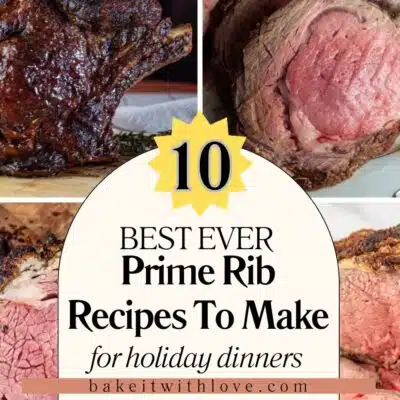
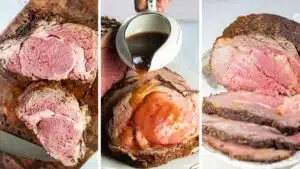
Comments
No Comments